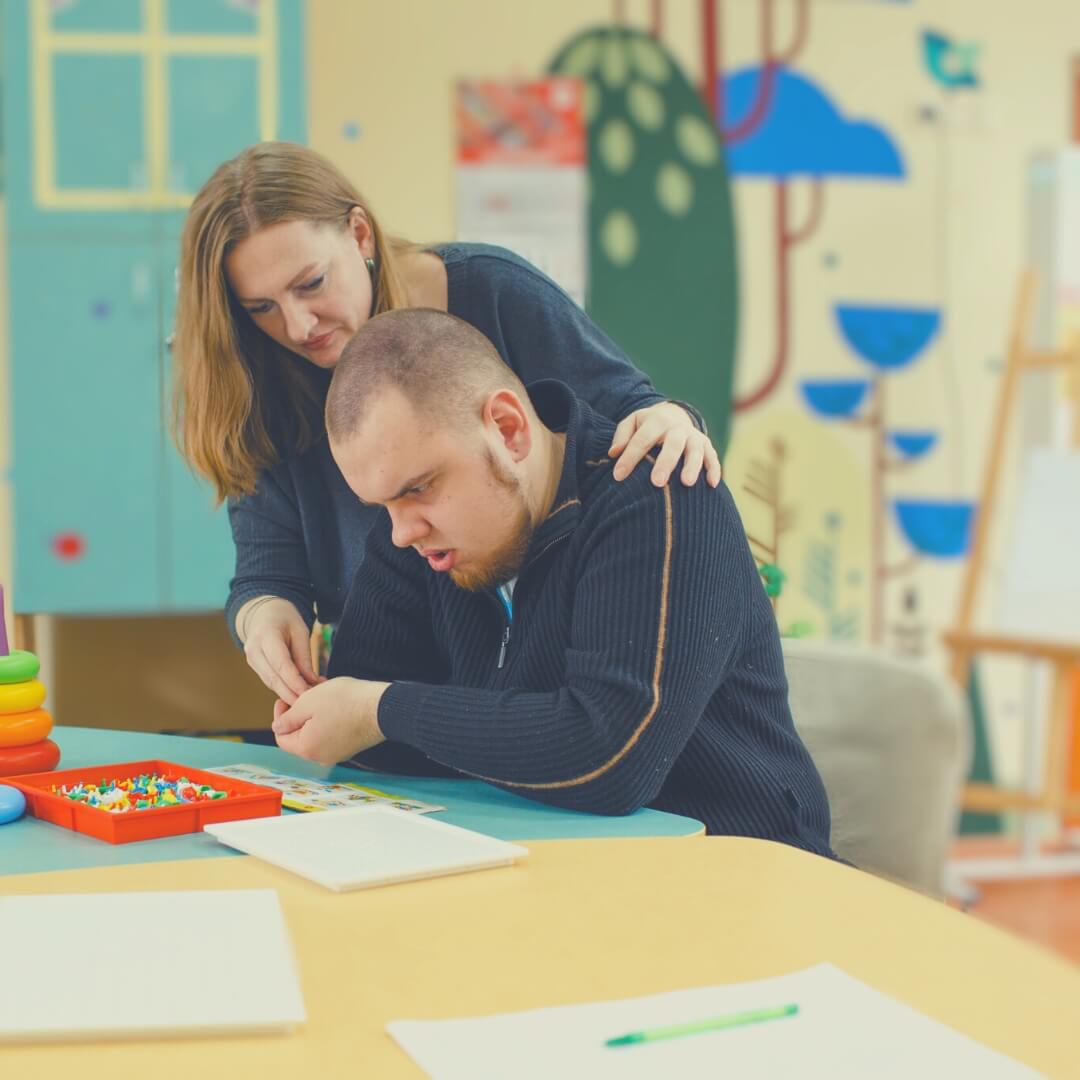Learning the difference between being a highly sensitive person vs autism can make a big deal in terms of understanding how to respond and support individuals with these special needs.
While they both have shared traits, there are important distinctions.
Being able to recognize what sets these two apart can go a long way to ensure those in our lives with autism or HSP, including yourself, get the care they need to improve functional outcomes.
Today we will be discussing some key differences to be aware of.
What is a Highly Sensitive Person (HSP)?
While the idea of highly sensitive people has been around since at least the 1990s, this personality trait is just now starting to gain recognition.
Generally speaking, a highly sensitive person is someone who has a heightened awareness to stimuli in their environment.
This can range from loud noises, bright lights or strong smells that would be typical of a normal setting, but have an exaggerated effect on HSPs.
Additionally, they may also have an intense emotional reaction to situations and more difficulty regulating emotions than others do. For instance, they may avoid violence in movies or shows because it triggers a strong emotional reaction.
In general, people with HSP react greater to certain physical, emotional, or social situations around them.
What is Autism?
Autism Spectrum Disorder (ASD) is a neurodevelopmental disorder characterized by difficulty in social interaction, communication, and repetitive behaviors.
People with ASD typically have difficulty understanding nonverbal cues, such as facial expressions or body language, and can struggle to understand the feelings of other people.
They may also experience sensory sensitivities to light, sound, touch, and other stimuli that can be overwhelming for them.
People on the autism spectrum also tend to engage in repetitive behaviors or have intense interests that may be difficult for them to shake.
They also prefer having a set routine, and in fact might become anxious or agitated when it is disrupted.
If you're still having a bit of trouble distinguishing between HSP and autism, don't worry. This list below can help break down what it means to be a highly sensitive person, and how autism is quite different.
Highly Sensitive Person (HSP) VS Autism: 12 Core Differences
1. Autism is a Neurodevelopmental Disorder
First and foremost, it's important to note that autism is a neurodevelopmental disorder, whereas being a HSP is not.
This means that individuals with autism show delays in their development of social skills, communication, and language abilities, as well as motor and cognitive functioning even during childhood.

There are physical changes in the brain that lead to the development of autism, and it is also considered a hereditary and genetic condition, with those with a sibling with autism having a 20% greater risk of developing this condition.
People who consider themselves HSP, on the other hand, don't generally exhibit their behavior due to changes in the brain (unless their heightened sensitivity is due to trauma or other mental illnesses such as anxiety).
In fact, being HSP is considered a personality trait rather than a mental illness or disorder.
2. Sensory Processing
While both conditions involve some degree of sensory processing differences, these sensitivities tend to be more pronounced in people with ASD. For instance, they may be overwhelmed by sensory input like loud noises, bright lights, strong smells, and other stimuli.
This can make it difficult to complete everyday tasks or participate in social situations that involve these stimuli.
Meanwhile with HSPs, the response to stimulus is usually more nuanced and does not necessarily require special accommodations as it would for someone with autism spectrum disorder.
For instance, someone who is an HSP might easily become overwhelmed in a crowded or noisy environment, but be able to eventually adjust and cope with the situation, or, they might choose to leave at their own will.
3. Emotional Responsivity
Autism can cause people to have difficulty regulating emotions, which can lead to extreme behaviors like tantrums or meltdowns when they are feeling overwhelmed.
People with autism may also struggle to understand the feelings of others, which can make social situations challenging.
While some people with ASD can learn, through therapy and behavioral interventions, to better understand and interpret emotions, this can be a lifelong challenge.
In contrast, HSPs may experience intense emotional reactions to stimuli or situations that would not be considered abnormal for others, but the individual's emotions are often manageable and can be regulated with help from other people or distraction techniques.
For instance, if they are sensitive toward witnessing violence, they can use skills like deep breathing or mindfulness to calm their emotions.
4. Communication Styles
Some people with more severe autism spectrum disorder often have difficulty communicating verbally due to deficits in language development, though this varies depending on their level of functioning and age.
In more severe cases, they may need to rely on nonverbal forms of communication, such as sign language or picture boards.
Highly sensitive people generally communicate effectively and have no difficulty with verbal communication. They may, however, be more thoughtful in their speech and prefer to take time before responding to someone else.
This is because they tend to analyze the situation before speaking up, as they can sense subtleties in conversations that others may not pick up on. As an HSP, one of the worst things you can do is move too quickly or take any decision lightly.
5. HSP's Are Big on Empathy
It's no surprise that highly sensitive persons are very empathetic, as they tend to be more in tune with the feelings and emotions of those around them.
This understanding helps them to relate better to others, as well as become a compassionate listener when needed.
Furthermore, they often have an ability to put themselves in another person's shoes and understand their perspective.
On the other hand, people with autism may struggle to comprehend the emotions and experiences of those around them.
While they may be able to sympathize with someone, they have difficulty recognizing the subtle nuances that make up social interactions like body language or facial expressions.
Fortunately, with early interventions, some people with autism can learn to better understand social cues and become more independent as they grow older.
6. Childhood Trauma
It's important to note that childhood trauma can be a cause of being an HSP, whereas it isn't a factor in developing autism.
In fact, the highly sensitive personality trait can be traced back to early childhood experiences such as neglect or abuse which can lead to a person being hypersensitive to their environment and reactions from others.
This hyper-vigilance is a common symptom of mental illnesses such as PTSD and anxiety, and can be a trigger for anxiety or depression in some people with HSP.

If you remember needing to constantly feel reassured, needing to monitor your surroundings due to fear of danger, or feeling easily overwhelmed by sensory stimuli as a child, then these can be signs that you may be a HSP.
However, in people with autism, these behaviors are usually due to the neurodevelopmental disorder rather than a past trauma.
Physical changes in the brain, issues during fetal development, and genetics are more likely to be causes of autism spectrum disorder.
While there isn't a 100% answer to why autism occurs, there is more research being done to better understand this condition.
7. Reaction to Change
People with HSP tend to prefer routine, as sudden changes or disruptions to their everyday life can be bothersome and overwhelming.
For instance, a change in routine such as starting a new job or moving to a different city can make them feel anxious and stressed.
Meanwhile, people with autism may find sudden changes more difficult to cope with due to their difficulty understanding the transition. This can cause them to become frustrated or overwhelmed.
Some people with severe ASD can still live fulfilling lives, so long as they have a predictable and consistent routine that they can follow.
For those who are HSP, it is important to learn how to manage their stress levels when faced with sudden changes and to find ways of coping that work for them.
8. Treatment
The treatment for both conditions varies depending on the individual's needs and symptoms.
For people with Autism Spectrum Disorder, this may involve medications for certain associated symptoms like anxiety or depression, as well as behavioral interventions such as Applied Behavior Analysis (ABA) Therapy and Occupational Therapy.
On the other hand, HSPs tend not to require medication, but may benefit greatly from psychotherapy or counseling sessions that focus on helping them cope with their heightened sensitivity and manage stress levels better.
Mindfulness, meditation and certain forms of yoga are also effective methods for self-care and regulating emotions.
In addition, if you have another mental health disorder such as depression or anxiety, it's important to seek help from a qualified professional and learn to manage your symptoms as an HSP.
The importance of treatment in people with ASD cannot be understated. While living as an HSP can be challenging, it's important to remember that both conditions are very different and require uniquely tailored interventions.
It is essential to consult with a qualified professional to get people with ASD help as soon as possible. In general, the sooner interventions are given, such as during childhood, the better the chances of improving a person's overall functioning and quality of life if they have ASD.
9. Disability Status
In the United States, autism spectrum disorder is recognized as a disability according to the Americans with Disabilities Act (ADA).
This means that people with this condition are legally protected from discrimination in housing, employment, and other areas of public life.
However, HSPs are not recognized under the ADA as they do not meet the criteria for disability due to their heightened sensitivity being considered a personality trait rather than a disability.
Therefore, while both conditions can affect how an individual interacts with their environment and the people around them, it is important to understand the differences between them in order to provide appropriate support and treatment.
The two conditions differ in terms of communication styles, empathy levels, causes, reactions to change, and disability status – hence why it's essential to recognize the core differences between a highly sensitive person and someone with autism.
However, if you are an HSP due to childhood or other trauma and have another disability, such as PTSD, anxiety, or depression, then you may be recognized under the ADA.
It's important to talk to your doctor or a mental health professional that can help assess you more accurately and give you a diagnosis.
10. Presentations in Childhood
If you were told you were a “sensitive” child, it could mean that you are an HSP. However, in children with autism spectrum disorder, the signs of this condition can be more pronounced.
Although both children with autism and HSPs may display similar traits, such as being more shy or withdrawn than their peers, there are a few key differences.
Children with autism may have difficulty engaging in typical social activities, such as making friends or joining in group conversations.
They may also have difficulty interpreting emotions and understanding the perspectives of others, and may prefer to be alone or engage in repetitive behaviors.
There are also delays in development that can be readily apparent, such as not being able to speak until later in life, not engaging with parents like those children without ASD, or having difficulty learning and retaining new information.
In contrast, children who are HSPs may be more aware of social interactions and nuances in their environment, but struggle to process and make sense of the information.
They may retreat from social situations due to feeling overwhelmed or anxious, but it is important to note that they are still capable of engaging in typical social activities.
It's also worth noting that children with an HSP trait may show signs of this in early childhood, but this personality trait is not always recognizable until later on.
11. Hyposensitivity in ASD
It's a myth that people with ASD will only display signs of heightened sensitivity, or hypersensitivity, to their environment.
In fact, many people with autism will display both hypersensitive and hyposensitive responses to sensory stimuli… meaning they may be overly sensitive or under-sensitive in certain situations.
Someone with ASD might show little to no reaction to stimuli or even other people. This can mean that people with ASD may appear to lack empathy or emotion due to their inability to respond appropriately to certain situations.

Conversely, HSPs are more likely to show signs of reactive sensitivity, meaning they are easily overwhelmed by external stimuli and will often display empathy toward others due to being in tune with their emotions.
Both conditions can affect how someone interacts with their environment and the people around them, but it's important to understand the core differences between a highly sensitive person and someone with ASD so you can learn how these interactions might look in real-life scenarios.
12. Levels of Support
Finally, people with HSP tend to love being alone and crave their inner peace. They might retreat inwards and need some time to themselves in order to cope with the external stimuli.
However, this doesn't mean they don't enjoy their social interactions or can't build meaningful relationships. Most people with HSP will learn how to cope with their heightened sensitivity with or without professional help.
On the flip side, people with ASD require more tailored support and treatment interventions in order to manage their symptoms. People with ASD can also be very social, but they require a different level of support and understanding to ensure their needs are being met.
In fact, there are three levels of support for those with ASD, which coincide with the severity of their symptoms according to the DSM-5.
People with Level 1 autism might have some minor issues such as difficulty understanding body language or having trouble engaging in small talk.
For those with Level 2 autism, they have difficulties functioning in their daily life and can display inappropriate behavior, such as walking away mid-conversation.
Finally, those with Level 3 autism may need a lot of help in their daily life and may require behavior management plans, a daily care provider, and other tailored lifelong treatment.
Final Thoughts on Highly Sensitive Person VS Autism
It's clear that while both conditions can affect how someone interacts with their environment and the people around them, it is important to understand the core differences between a highly sensitive person vs autism.
While both can make social situations and daily functioning a challenge, HSPs are not recognized under the ADA as they do not meet the criteria for disability due to their heightened sensitivity being considered a personality trait.
Nevertheless, learning how to cope with this sensitivity can help people become comfortable in their own skin and build meaningful relationships.
Ultimately, understanding the core differences between HSP and autism can help us to be more empathetic and create an inclusive environment for those living with both conditions.
And if you're looking for more articles about comparisons of different personality types, be sure to check out these blog posts:
- Shy VS Introverted: 9 Differences Between These Personality Types
- Sigma Male VS Omega Male: 11 Core Differences
- Empath VS Narcissist: 11 Differences in Personality
Finally, if you want to identify YOUR personality type, then take one of these 11 personality tests to better understand what makes you tick.


